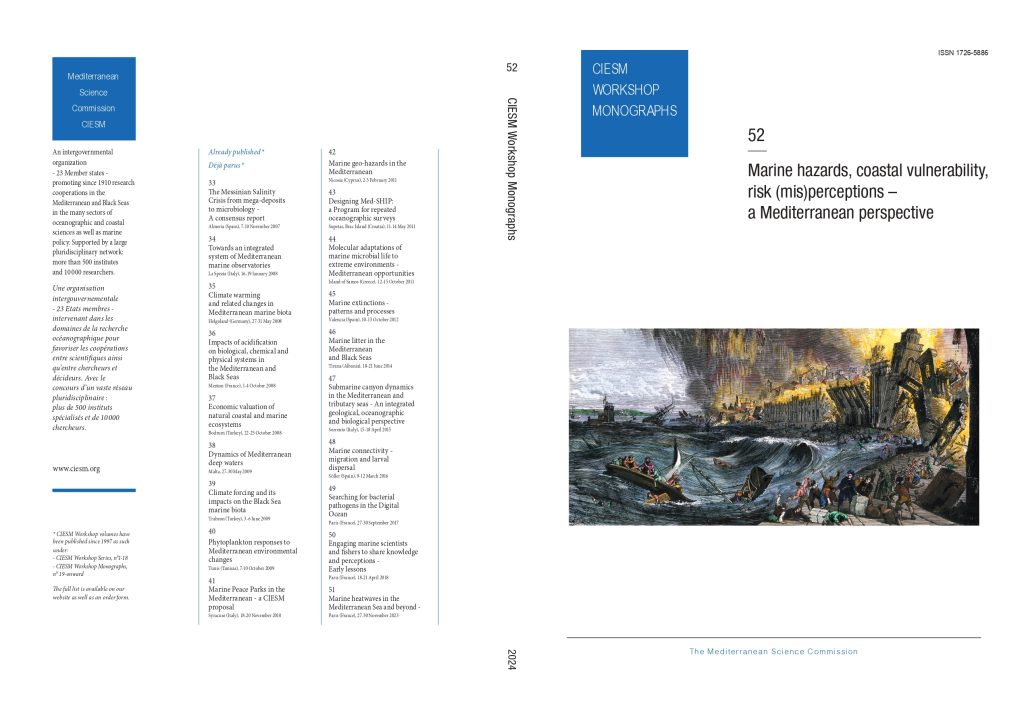The Mediterranean basin, with its 46,000 km of coastline and over 100 million residents, faces a variety of marine geohazards that threaten both human settlements and natural ecosystems. These hazards include earthquakes, tsunamis, submarine landslides, and coastal erosion, which are expected to intensify under the influence of climate change and human activities.
To address these challenges, CIESM gathered a panel of international experts from 16 countries for a dedicated workshop on Marine Geohazards in the Mediterranean, bringing together leading specialists in marine geophysics, seismology, oceanography, and coastal engineering. Their discussions and findings have been compiled in the latest CIESM Workshop Monograph No. 52, which provides an updated assessment of risks and mitigation strategies in the region.
Understanding Mediterranean Marine Geohazards
The workshop emphasized the unique geological setting of the Mediterranean, a semi-enclosed sea where complex tectonic activity, high population density, and critical infrastructure make marine geohazards particularly significant.
The discussions explored key topics such as:
- Tsunami risks and historical records: The Mediterranean is the second most tsunami-prone region in the world, with 98 recorded destructive tsunamis, including the 365 AD Crete earthquake, which triggered a 9-meter wave.
- Submarine landslides and their cascading effects: Underwater collapses, ranging from small-scale events to massive landslides exceeding 100 km³, can trigger localized tsunamis, as observed in the 1954 Algeria tsunami and the 2002 Stromboli collapse.
- The impact of sea-level rise on coastal regions: Increasing storm surges and coastal flooding are placing historic sites and urban areas at greater risk, with 49 UNESCO World Heritage sites in low-elevation coastal zones already exposed to long-term erosion and flooding.
- Active volcanic systems and fault zones: The Mediterranean hosts some of the world’s most active and historically impactful volcanoes, including Etna, Stromboli, and Santorini, with their eruptions shaping both the region’s geology and human history.
Future Perspectives
The workshop emphasized the need for improved hazard monitoring, early warning systems, and integrated coastal management policies to mitigate the risks posed by these geohazards. Better collaboration between scientific institutions, policymakers, and emergency response teams will be key to enhancing preparedness in the region.
This monograph is worthy of becoming a crucial scientific reference for researchers, students, conservationists and policy makers working to mitigate the growing impact of marine heatwaves.

🔗 Get your Monograph here: https://ciesm.org/our-science/workshop-monographs/